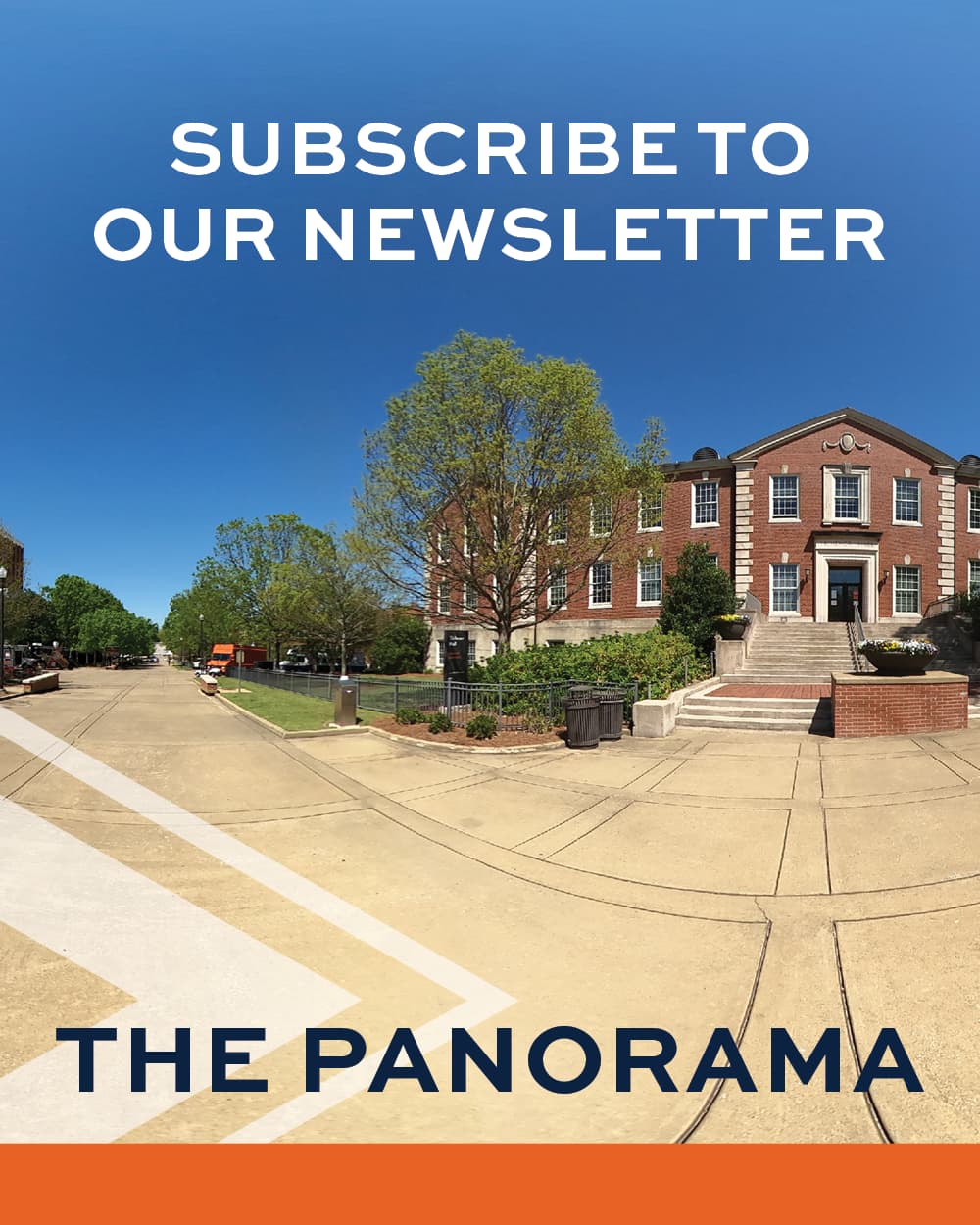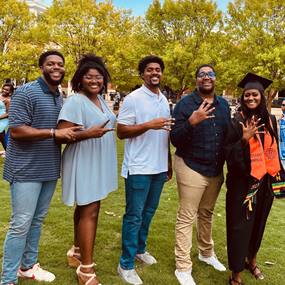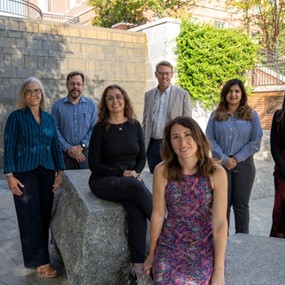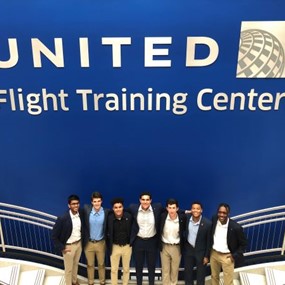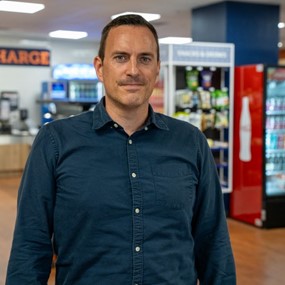Auburn expert talks interstates in new podcast
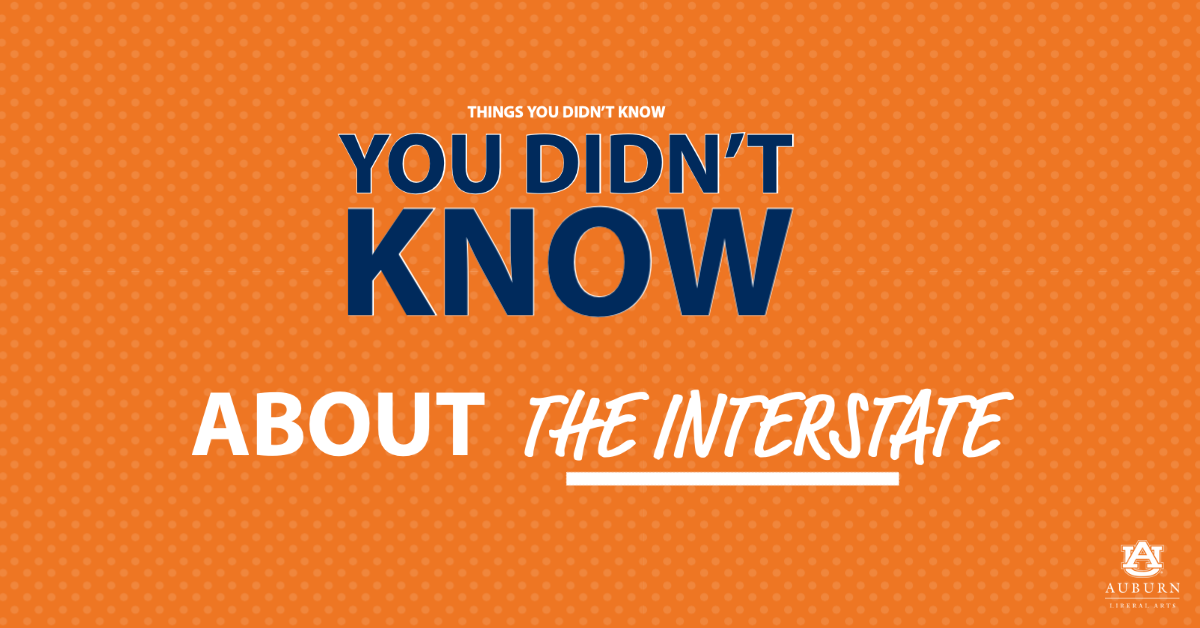
Rebecca Retzlaff is an Auburn expert that is uniquely interested in interstates. Specifically, she looks at planning history and how racially motivated actors influenced the routes we drive every day. In this podcast episode, Retzlaff explores Things You Didn’t Know You Didn’t Know about the interstate.
Transcript
Brandon Etheredge 0:00
Picture it with me. You're meeting a friend for dinner on the other side of town. You enter the restaurant into your phone and it says the quickest way to get there is to hop on the interstate and get off three exits later. On the drive, if the roads built well and not filled with potholes, you probably don't think twice about the actual interstate itself. Most people have never considered why the road is where it is. But Dr. Becky Retzlaff is not most people. She's a community planning expert that has spent years investigating American interstates and the political forces that shaped them. I'm Brandon Etheredge, and today we unpack things you didn't know you didn't know about the interstate. Joining me today is the newly promoted Dr. Becky Retzlaff. Congratulations. She is a professor in the master of community planning program at Auburn University and an expert in planning law and planning history. And specifically, you spend a lot of time focusing on the history of the interstate system because it had some impacts far beyond the evacuating people in the event of an atomic blast like President Eisenhower was worried about
right, the interstate highways were designed at the same time as the civil rights movement was happening in the south. And so many of the highways were actually designed to go right through African American neighborhoods, even in the north. planners found it much more politically convenient to go through black neighborhoods, and neighborhoods where other people of color lived then through white neighborhoods.
So let's kind of touch on that for a minute. The original idea when these interstates were built was not quite what we see today with these, you know, massive conglomerates of interstates running through the middle of cities. How did we get to that point?
Rebecca Retzlaff 1:39
Well, the first interstate highways were built in the United States around the 1930s. But it really wasn't until 1956, with the federal aid Highway Act, that highways were built on this wide scale with a comprehensive plan that connected you know, all of the major cities and states and definitely all of the capitals in the US. Along with the Highway Act, the Bureau of public roads, which is what what the Department of Transportation was called back then, they published a book that described where the highways would be located in cities, they called it the yellow book because it had this bright yellow cover in building urban expressways was very expensive, because you need to acquire land, you need to often force people to sell their land, there's often protests. And so only the largest cities and those located in sort of strategic locations, were designed to have highways running straight through them, all of the other cities, the little cities, the midsize cities, even some of the big cities had a highway running around it with this little spur road into the into the city. However, almost as soon as the Highway Act was passed, it sort of entered the political process and became a political process instead of just a technical engineering process. That's when state highway departments got involved. That's when urban mayors got involved in many of the interstates began to get rerouted through cities, because those mayors and governors wanted them to help with economic development in their cities.
Brandon Etheredge
So that's a conversation really happening not just in the south, but all over the country estates were looking to build out, you know, their portion of the interstate system. And we could look at this in a number of places, but you talked about it being kind of in the time of the civil rights movement that all of this is happening. So I want to focus on Montgomery and Birmingham, really, Alabama specifically, is the heart of the civil rights movement, Jim Crow era, you know, we can really see kind of all the factors playing into what was going on. So let's dig into what was happening in Montgomery at the time, john Patterson was the governor. And he appointed Sam Inglehart to lead the Alabama highway department, which is now a dot. And that's where a lot of the story centers. So tell us a little bit about Engelhart and kind of give us the context of why he was operating the way he was during these interstate projects.
Rebecca Retzlaff 4:04
So Engelhart was from Macon County, and he was a state senator. He was a state representative. He was the state democratic chairperson. He's probably best remember, though, for his extremely strict stance on segregation. To give you an idea of how much of a segregation is he was he actually campaigned against George Wallace because he thought that George Wallace was too much of an integrationist his business cards. If you flip them over to the back side, it says Alabama's foremost segregation leader printed. He was the head of a hate group, which is called the Citizens Council. He was affiliated with the KKK. And he's also very well known for designing the gerrymandering of Tuskegee. So he at one point, Jeremy and are the city of Tuskegee boundaries to exclude nearly every African American person And voter in the city. And now that was really important to him because his political futures sort of depended on suppressing African American voters because he was the state representative from Macon County. And the county was 84%. African American. At the time, he was the Alabama highway director for a very relatively brief time from 1959 to 1962. So it wasn't very long, but it was this really pivotal time in history, because that's when almost every big Highway in Alabama was routed. Many of the routes were finalized, many of them started construction, some of them actually finished construction when he was the highway director. So once that was finalized, there was really no changing it. So even though the highways, a lot of them were built after he left to being the highway director, he still had a major influence on the location. State Highway directors such as Engelhart, were really instrumental in designing the interstate highway system. The Bureau of public roads left a lot of the routing choices up to the states because they had more knowledge of local conditions. They knew the environmental conditions, they knew the local politics. And unfortunately, as we know, in Alabama, the highway director was a white supremacist and he ended up routing the interstates directly through neighborhoods that were home to African Americans, low income people and other people of color. In fact, if you overlay an old racial zoning map for Birmingham, racial zoning is an old system of zoning that separates neighborhoods into black areas and white areas. If you overlay that on where the interstates are today, then you'll notice that the interstates actually gerrymander through the city to go right through the African American neighborhoods. And in some cases, they were on the edge of the neighborhoods to provide this buffer between the black areas and the wide areas.
Brandon Etheredge 7:07
So you mentioned you talked about the the vote suppression that he was involved with in in Tuskegee and Macon County. So we'll get back to that in a minute because that is both suppression efforts don't really in there. But one of the targets that Engelhart had his eyes set on was this historic Centennial Hill neighborhood in Montgomery, you may not know where that is, but when we say this, it might, might bring it to mind is it's right next to the Alabama State University campus right there along 85 in Montgomery, which for those that don't know, is historically black college and university and really became a rallying spot during the Civil Rights Movement. So I tried to help us kind of understand why Centennial Hill found itself kind of in the crosshairs during the route planning process.
Rebecca Retzlaff 7:52
Centennial who was home to some very prominent leaders of the civil rights movement. Martin Luther King lived there. Ralph Abernathy lived there. Joanne Robinson and many other faculty from Alabama State University lived there. Georgia Gilmore, who was one of the major fundraisers for the bus boycott lived there and many other civil rights activists. So before Englehart became the highway director, the route of i 85, was actually supposed to go a little bit north of ASU still in Centennial Hill, but it would miss the nicest area just next to the university where Abernathy and Robinson and others lived. And one of Eagle hearts first access highway director was actually to reroute the interstate closer to the university and wipe out what was really the only middle class neighborhood in the city where African Americans were allowed to live because the city was segregated back then.
Brandon Etheredge 8:55
And I feel like you know, when we say that I think a lot of people's reactions are and you know, if you're thinking about it in the context today, okay, well, they can't live there, because there's a highway coming through. Maybe they can just move somewhere else in the city and live somewhere else. But like you said, is it segregated? And one of the things that play during this time period, is the idea of redlining. So talk a little bit about that, and why the neighbors or the the neighbors in this area couldn't just move and go somewhere else.
Rebecca Retzlaff 9:20
Right. It was very, very difficult for African American families to find a home in many cities in the US at this time. You had what was by the 1950s, you had decades of housing discrimination at work. You had things like redlining, which prevented African Americans from owning their homes in the decades before the Civil Rights Movement, you had racial zoning, other types of mortgage discrimination. And so by the time you get to the 1950s, there was about a 100% occupancy rate in the African American neighborhoods in Montgomery. So if you demolish more homes by Bill interstates and through other things like urban renewal, and what they call it back then slum clearance. Many people really had nowhere else to live in the city. And so African Americans back then couldn't just move anywhere back then in the in Montgomery, they had to live only in the African American neighborhoods, which largely weren't sort of expanding their boundaries. So it was very difficult to find a place to live.
Rebecca Retzlaff 10:25
So the discussions around these route plans got so loud, the White House actually weighed in and basically said, We don't care where you put these roads, but just don't run them through Centennial Hill. residents were starting petitions even came up with alternate routes for the highway. So there's a lot of moving parts here kind of explained at this point, what's on the table in terms of where this interstate might run what what the state's looking at what the neighbors are hoping for what was kind of on the table.
Rebecca Retzlaff 10:51
The residents of Centennial Hill did not get an express right through their neighborhood without a huge fight. They appeal to President Kennedy, they wrote to Eleanor Roosevelt. They hired a lawyer and they went to Washington DC to meet with the Bureau of public roads. They filed a complaint with the US Civil Rights Commission. So at one point, the White House, met with the activists and told the Bureau of public roads to put the expressway anywhere but that neighborhood. And the residents of Centennial Hill got hundreds of signatures on a petition to get the expressway out of their neighborhood. Their first proposed route was down what's now how I 231 which is now a suburb. But back then it was a mostly rural area sort of skirting around the city, just like the original plans had intended. Another proposed route was just a little bit north of ASU through a large park called Oak Park. The parks in Montgomery were actually closed at that time, permanently, because the activists had tried to desegregate the parks. And so the city had actually closed all of the parks to avoid desegregation. And they said that they were never going to be opened again. A third route proposal was just a bit north of the park through a neighborhood also in Centennial Hill, but not the sort of middle class right next to ASU neighborhood.
Brandon Etheredge 12:15
So based on on your research, what we end up, you know, finding out obviously, if you've driven on 85 You know, it runs right there next to ASU. Talk about what actually ended up happening. You know, which route ended up being the one that was built,
Rebecca Retzlaff 12:30
while the one that was billed as the one that Engelhart had had designed, it was right next to Alabama State University. Some of the residents actually believed that the expressway was designed to remove African American voters from the city. At one point, Reverend Abernathy wrote to President Kennedy, telling him that if the highway was built, it would wipe out many of the few African American voters who lived in Montgomery at the time. Wow.
Brandon Etheredge 12:58
So you know what I feel like we talk about the civil rights movement, we talk about all these things in it. I think for a lot of people seems like, gosh, this happened so long ago, but it's really 5060 years ago that all of this is happening. And I think framing it in that that reality of you know, this really wasn't something that we're so really isn't something we're so far removed from, you know, the impacts of this weren't just people had to leave their homes and find somewhere else to live. I mean, these communities are still filling these impacts today talk a little bit about, you know, what that looks like for these communities and what they're still dealing with from that.
Rebecca Retzlaff 13:32
Yeah, there's so many negative impacts for living near an expressway. Even today. People who live near expressways have higher rates of asthma, higher rates of heart disease, there's some research showing that they have less educational opportunities. People who live near interstate highways tend to walk less and drive more, because of course, you can't easily get to the other side of an expressway without being in a car. So there's a lot of impacts that still happen today. And what's important to understand is that so that we can correct these things is that this was no accident, right? urban planners were complicit, they were co conspirators in advancing this racially motivated plans and policies that are really still affecting people who live in cities today.
Brandon Etheredge 14:19
So most people listening probably learned something new today, at least. That's the goal of this podcast. And typically, when you learn something new, there's an action on the back end of that you learn to ride a bike, you take the training wheels off, you learn grammar, you write better papers. So let's let's talk about the action on the backside of this your research research like it is really exposing these horrible situations across the country that led to the interstate being placed right in the middle of so many black communities in Alabama, but it's important to realize this was happening across the country. So how are cities reckoning with that? What are they doing to try to now that they know and people today know what's happening to make For what happened back in the in the 60s,
Rebecca Retzlaff 15:03
right now is a really exciting time to be doing research on interstate highways because almost every week, I see a new proposal for city planning that tries to correct these racially motivated plans of the past. Just the other day I came across a proposal to cap over i 75. And I 85 through Atlanta with this huge, awesome, beautiful green space. That would be this huge park right in the middle of the city. There's similar proposals in a lot of cities, Chicago, Minneapolis, Detroit, just to name a couple. Now, that's that's a pretty, you know, long range, expensive plan. But even if cities don't go as far as trying to cap over interstates, a lot of them are are simply improving the connection in the underpasses between these disconnected neighborhoods, and that's helped a little bit Montgomery, for example, did some of that before the 50th anniversary of the summit to McCurry March, they planted a bunch of street trees near the underpasses. They improve the sidewalks on our I 65. And I 85, especially where the reenactment marchers were going to be coming through to the Capitol.
Rebecca Retzlaff 16:18
This is obviously something cities are looking at and considering is they're they're looking at how to deal with this, but it's come up on the national stage as well, during the last legislative session. There was action on this obviously, it didn't make it through both chambers. The new Secretary of Transportation, Pete buttigieg, has talked about it. So on a national level, what are we seeing in terms of dealing with these situations,
Rebecca Retzlaff 16:42
I think you're probably gonna see a lot of things coming from the new department of transportation. Pete Buda judge seems incredibly interested in this in one of his very first tweets he mentioned, the need to or his desire to try to correct the racially motivated actions of that department in the past.
Brandon Etheredge 17:02
And talk a little bit about the the legislation that has come up previously, it didn't obviously pass, but it's come up in congresses in the past,
Rebecca Retzlaff 17:09
right, there was, um, just about a month ago, there was new legislation introduced in Congress for a huge funding bill to, to reconnect to fix the interstate highway system, not just not just kept over all of the interstates, but also reconnect the neighborhoods. And the exciting thing was that it was proposing to do thing, things through this collaborative process. It wasn't it wasn't just this sort of top down process. But there was a large amount of money for community action and for public information and public advocacy and stuff like that. So it was really trying to be this sort of community centered, you know, planning activity that that is something that did not happen when the interstates were were initially built.
Brandon Etheredge 18:05
I thank you for joining us today chatting with us. Hopefully, people learn something that they didn't know they didn't know before listening today. Your research was super interesting and hopefully gives people a new, new thing to think about as they're driving down the interstate and what really went into those being built across across our country. Thank you for having me. Things You Didn't Know You didn't know is a production of the College of Liberal Arts at Auburn University. To learn more about our faculty's life changing research, visit cla.auburn.edu
Transcribed by https://otter.ai
